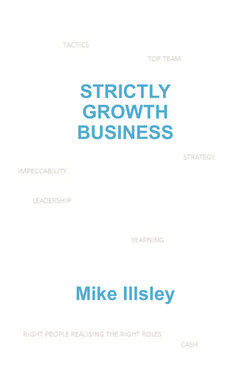Читать книгу STRICTLY GROWTH BUSINESS - Mike Illsley - Страница 5
На сайте Литреса книга снята с продажи.
ОглавлениеSTRATEGY
THE CLEARLY DEFINED STRATEGIC VISION
CHAIRMAN AND CHIEF EXECUTIVE OFFICER
UTILITY AND VALUE
SKILLS AND CASH
COMPETITIVE FORCES
PRODUCT MANAGEMENT
REVIEWING THE STRATEGY
THE CLEARLY DEFINED STRATEGIC VISION
Strategy is the choice of market war or wars that the business commits to win in order to achieve the powerful market position it intends to have and to hold. Everything else is tactics.
The strictly growth business has, by definition, to be in a continual state of growth. This is only possible if the powerful market position it seeks is so challenging that it takes considerable time to realise. This is the vision element.
Whilst the strategic vision needs to be exceptionally challenging it must obviously have sound logic in its formation. There is no point fighting a war that is impossible to win. The sound logical basis on which the strategic vision is based needs to be written down and filed. This is the clear definition element.
All three elements are critically important to the on-going success of the strictly growth business.
Strategic vision is the almost impossible objective that drives a business forward year after year. It is the mission that inspires all those involved to make their very best contribution.
Settling on a strategic vision requires more than analysis. Strategic vision requires very fine judgment of the odds of succeeding within the particular market environment. The vision encompasses the degree of investment as much as the strength of the market, political and competitive forces. There are many excellent books dealing with strategic planning and there are some methods that are widely accepted, but this remains a personal issue and , purely for the sake of completeness, the key thought processes that I used are covered in sections of this chapter.
Sometimes the strategic vision can be a dream in the mind of the leader. Often this is enough. It encompasses an exhaustive analysis that lies in the leader’s mind set, sometimes described as gut feel.
Essentially the strategic vision is best defined by the statement “is it worth the bet?”
This clearly defined strategic vision enables it to be used over time as the yardstick against which all products in the portfolio and all business projects are assessed. It is, in effect, under constant review. It will enable the business to maintain continuity particularly when there are the inevitable changes in top executives. It will also be the datum against which dramatic changes in market dynamics for critical product lines or the overall market demand its review.
Even the visionary leader will benefit from having a written definition of the vision as a means of communicating to others, as a constant reminder to ensure continued focus, and as the start of an exhaustive analysis that may be developed over time to improve accuracy in forecasting customer and competitor behavior. In the corporate world a detailed written strategic vision is an absolute essential.
This, then, is the clearly defined strategic vision (CDSV) that continues on year after year after year until either it is close to realisation, or some dramatic event occurs that can be viewed as so significant it is a true paradigm shift in market dynamics. When either of these events occurs a new CDSV is needed.
There is no need, and should be no attempt, to change the clearly defined strategic vision unless there is a paradigm shift in market dynamics. Certainly there is absolutely no sense whatsoever in having any formalised regular review. Market dynamics do not change to match any pre-ordained review dates. In fact such formalities are dangerous in risking postponement of debate, being a waste of executive time and possibly causing unnecessary positioning by executives.
